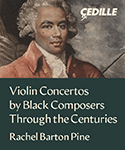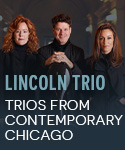Scholars acknowledge the twelve sonatas Op. 1 by Lodovico Giustini (1685–1743) published in 1732 as the first sonatas to be expressly written for the fortepiano, specifically the newly invented Cristofori model. Like his better known Baroque contemporaries Bach, Handel, and Scarlatti (who also were born in 1685), Giustini’s individual movements are rooted in dance forms. Yet his simpler harmonic language, marked use of dynamics, and more melodic and less contrapuntal orientation typify the then-developing galant style, pointing the way toward J.C. Bach and early Mozart. Indeed, the expressive intensity found in Giustini’s slower movements foreshadow the Sturm und Drang style dominated by Haydn around a half-century later.
I first got to know these works through two LPs on the Titanic label that Mieczyslaw Horszowski recorded at the Metropolitan Museum of Art on the earliest of three surviving Cristofori fortepianos. In 2010 Brilliant Classics brought out the first complete recorded Op. 1 survey, featuring fortepianist Andrea Coen utilizing an instrument modeled after Cristofori. The label now releases its second Giustini cycle, this time on a modern concert grand.
Pianist Paolo Zentilin clearly revels in his Fazioli instrument’s tactile immediacy and alluring range of tone color, which readily lend themselves to the pianist’s playful inflections and sudden shifts in articulation, as tellingly demonstrated in No. 5’s Corrente and No. 6’s Giga, to give just two examples. No. 11’s second movement features long, gorgeously shaded legato lines that elevate the composer’s dolce directive to rarified heights.
Conversely, Zentilin sometimes scales down the music to more intimate and seemingly offhanded dimensions; his improvisatory way with No. 7’s opening Allemanda sharply contrasts to the firmer and steadier dotted rhythms that pianist Enrico Maria Polimanti favors in his Naxos recording of selected sonatas. In fact, some listeners may prefer Polimanti’s less stylized, more straightforward approach, together with Naxos’ fuller-bodied sonics. By contrast, a more distant concert hall perspective characterizes Brilliant Classics’ engineering. While I wouldn’t want to be without Polimanti, I can’t fathom any keyboard enthusiast passing up Brilliant Classics’ absurdly inexpensive price tag for all twelve Op. 1 sonatas, plus Zentilin’s refined artistry. An irresistible release.
































